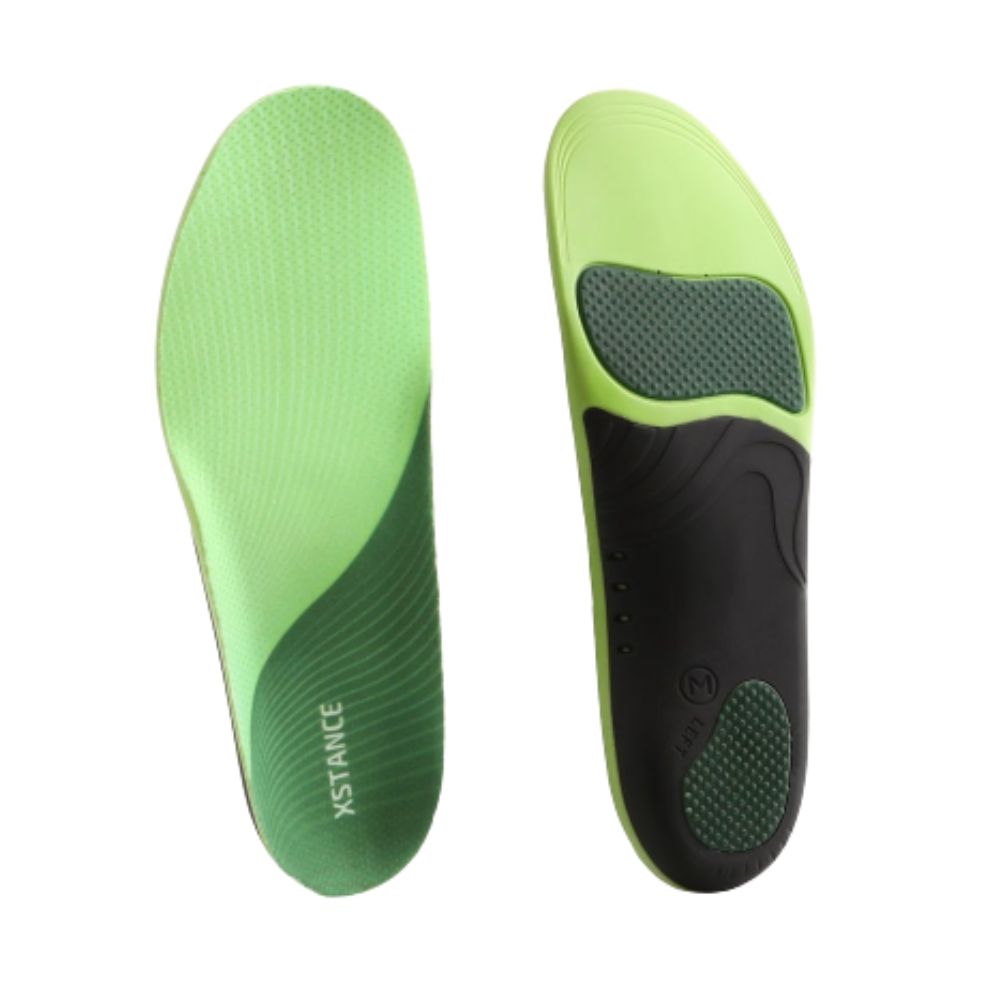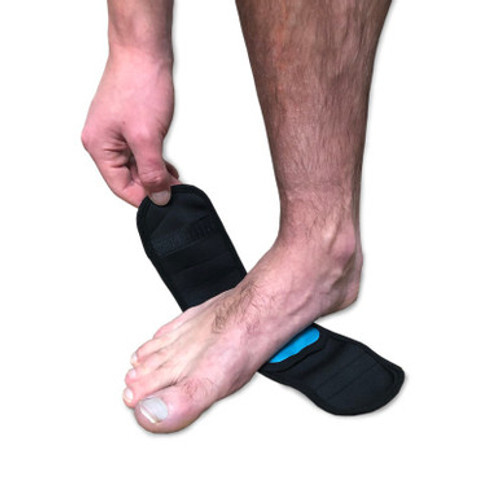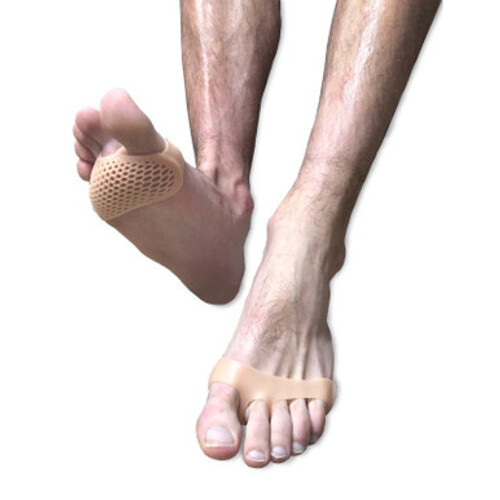Metatarsalgia Demystified: Causes, Symptoms, and Best Treatments
etatarsalgia is a term that’s widely used when referring to general foot pain, though it’s typically around the ball of the foot.
It’s painful, wildly uncomfortable, and can ruin your day faster than you can say Jack Robinson. So what’s the deal with metatarsalgia? And should you be concerned?
Here are some of the main causes, symptoms, and best steps for self-treatment if you suffer from this nagging condition.
What exactly is metatarsalgia?
As previously stated, metatarsalgia is characterized as pain in the forefoot. It can feel like a burning sensation, ache, or mild tingling, usually caused by a little bump under your toes on the ball of your foot. Suffering from it feels like having a tiny stone or a rolled sock trapped in your shoe.
Not a desired sensation, we know.
Your forefoot has the head of the metatarsal, metatarsophalangeal joint, and adjacent soft-tissue structures. There are 5 metatarsal bones in the foot – the fifth bone being the usual suspect causing pain and discomfort. Metatarsalgia can also be a bilateral issue for some of us (stemming from 2 places).
And while mostly innocent, metatarsal pain is very annoying. It distracts, nags, and steals your comfort when walking or standing during long working hours.

[ ]
]
Metatarsalgia main causes
Intense training or activity
E.g. runners who experiencing more frequent shocks while running or employees putting too much pressure without movement for extended periods.
Foot shapes and deformities
We are all different. A high arch can put extra pressure on the metatarsal area. Wearing small shoes or high heels can cause bumps on the bottom of your feet and lead to metatarsalgia also.
Holding excess weight
Also an issue, due to the wrong disposition of the bodyweight on the feet, creating too much pressure on certain spots (looking at you metatarsal!)
Symptoms can include:
- Sharp or shooting pain, numbness, or tingling in your toes
- The feeling of having a pebble in your shoe
- Constant aching and discomfort
- Burning pain in the ball of your foot,
- A sensation of standing on a hard surface barefoot or in shoes without proper support
Metatarsalgia usually slowly disappears under strict, but conservative measures. Enough foot exercise and proper support in your shoes are crucial for healing.
So how concerned should you be? And do you need to empty the bank to see a specialist?
Luckily, there is rarely a need for surgical procedures. However, metatarsalgia should not be left untreated. The recommendations below will help you resolve it, even after a metatarsal fracture, so you can heal faster and keep your feet healthy. All while reducing the possibility of repeated health problems.
Metarsalgia self-treatment recommendations
In no particular order of effectiveness, follow these steps for relief. Using one treatment may help, but using them all in unison gives you the best chance of recovery and relief.
1. Let your shoes breathe!
Shoes have feelings too! Change your footwear daily, let them outside in the sun, wash them properly, and avoid prolonged standing in the same type/pair of shoes or boots.
2. Metatarsal targetted stretches
Short and sweet, but done daily for the best results. Aim to stretch your feet for about 15-30 seconds and repeat 2-4 times. Among the best exercises for metatarsal are calf raises, toe raises and toe towel scrunches.

3. Support your feet
Foot support can’t be forgotten. It’s important for your body weight to be spread evenly to relieve pressure from the balls of your feet. XSTANCE Insoles have soft yet structurally sound padding just under the metatarsal bone to help deflect stress and shocks from the area.
4. Metatarsal honeycomb pads
Perfect for busy bees. Honeycomb pads are going to be your new best friend! They give unmatched support if you’re standing for long periods of time while also allowing you to wear heels without any pain. Honeycomb pads work to eliminate the burning sensation in the ball of your foot and together with proper insoles help to spread your weight evenly and get rid of the dreaded ‘pebble foot’.
5. Ice, ice baby!
Apply ice packs to the affected area for about 20 minutes at a time, several times a day. To protect your skin, wrap the ice packs in a thin towel.
Metatarsal pain can be treated at home for rapid relief. However, if left unattended, it might cause further pain, not only in your feet but also in your lower back or hip area, and cause limping. If your symptoms persist or worsen – visit a physician for a professional assessment to prevent turning into metatarsalgia or Morton’s neuroma.
Keep The Faith
It’s easy to let metatarsalgia get you down. And it’s often the more subtle ailments that fly under the radar, constantly evolving until one day they’re too much to bear.
It’s important to take action and tackle it sooner, rather than later.
We recommend following the self-treatment steps above for at least 3 - 4 weeks. And most importantly, keep the faith that you will get over this condition and reclaim the spring in your step.
At XSTANCE, we’re dedicated to helping people working long hours on their feet and get rid of the pain and discomfort - it’s all we know!







